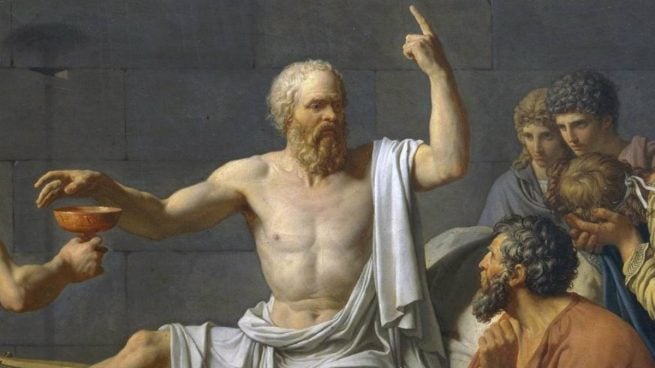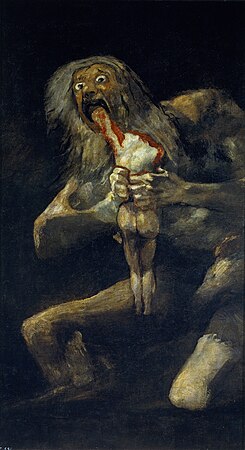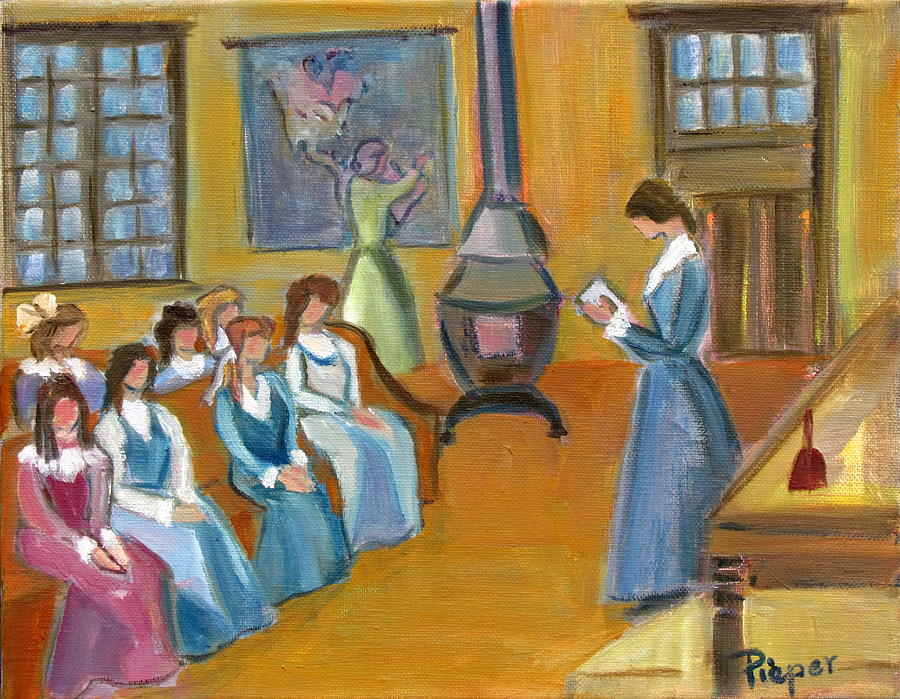The role of Theory in the study of International Politics.
Sketches for a fuller academic biography
Reinhard Meyers -
Theory is “…the net which we throw out in order to catch
the world – to rationalize, explain, and dominate it.”
Karl Popper: Logik der Forschung, 6th ed. Tübingen 1976, p.31
One sometimes wonders whether it is a mere historical coincidence that two German philosophers both named Karl have left, each in their own way, a most decisive mark on the epistemology of 19th and 20th century social sciences. The first bearer of that
household name still found reason enough, in the 11th of his Theses on Feuerbach, to take his learned colleagues to court: “The philosophers have only interpreted the world in various ways; the point is to change it”. That change, of course, should follow a firmly traceable directional arrow – an arrow, however, which was not loosened from the bow of Cupid, but rather out of the armoury of Minerva, aiming at an association in which the free development of each would be the free development of all… The second Karl however, as we all know, tended the regard such grandiose schemes with a solid dose of rational scepticism. We may, he once said, “…become the makers of our fate when we have ceased to pose as its prophets…” (The Open Society and its Enemies, Intro.)…
Perhaps even more than his refutational epistemological excursion into the habitat of birds – “No matter how many instances of white swans we may have observed, this does not justify the conclusion that all swans are white” (ibid., pp 39 et seq.) – it is this famous quote by Sir Karl which, on closer inspection, offers a fitting precept for a full and varied vita academica activa – with the mythological figures of Sapientia, Sagacia, Eruditia, and Pallas Athena lending a helping hand or two. Of course, one would have to steer clear of George Bernard Shaw’s little dose of caveatic vitriol in Man and Superman: “He who can, does. He who cannot, teaches.” Translation for the not so ripe academic youth: “…roll up your shirt-sleeves and get on with it…!”
But, admittedly, both our Karls could serve equally well as academic lode stars: without an idea of how to take up the cause of the alienated and oppressed of this globalized world, the Social Sciences would lack a most decisive element in their complexion: compassion. And without an idea of the temporary, provisional character of all academic knowledge the Social Sciences would lack another decisive element in their make-up: rational criticism, the conditio sine qua non of those Giants of Enlightenment upon the shoulders of which we all stand, and without the wits of whom we would all not be here.
Having said all this, allow me to pause for a moment and look back at my first few paragraphs: did you notice that all good idols of the academic world – from Sapientia to Minerva - were female ? In a university such as Novi Sad this is of course an open secret (and I am admittedly proud to have been able to assist, in a very modest way, both the former, and the present Lady Rector in the field of European Studies). But let me confirm this out of my experience of thirty active years in university politics, out of which a dozen or so as Dean or Vice-Dean of the Social Sciences Faculty in Münster: the modern bogey bear of the learned republic of letters is the MAN from the Ministry, be it Higher Education and Research, or Public Finance. Ever heard of a woman slashing your budget ?
After this little deconstruction of my academic GPS coordinates, let me now turn over to the subject for which the majority of you, no doubt, are here for: why do we deal with international relations theory – or more precisely: why do we deal with international relations theories ? Why is it that - as some of my first year students remark every year, time and again, for the last 35 years of offering a teaching service to the learning (and aspiring to become learned) community – why is it that the Social Sciences in general, and International Relations in particular, cannot make do with just one elegant, empirically rich, epistemologically parsimonious, and above all, understandable theory which provides an explanation of facts, predicts future outcomes from known boundary conditions with a good degree of certainty, and also allows you to define and choose an option for action, and to justify that choice vis-à-vis all those I-told-you-so-before pundits and the it-will-never-work-that-way critics of this world ?
One very easy way to answer that question would, of course, be to perform a Marxian Double Nelson on the very first Popperian quote with which we started it all: if theory is the net we throw out in order to catch the world, the undoubted existence of a vast number of different social, political, economic realities allows au fond only one conclusion: there must be a great number of different nets with sometimes coarser, sometimes finer meshes – in other words: there must be as many theories as there are distinct social universes co-existing next to each other. Of course, another German philosopher, in this case Hans-Georg Gadamer (in his Philosophical Hermeneutics), would caution us immediately against the spectre of a linguistically-constituted Hermeneutic circle. If we need a particular theory to catch, understand, write, or talk about a particular world, can we then use the “existence” of that world – usually established by convention among a number of interested individuals – to refer back to, to “prove” the existence of the corresponding particular theory ? Tertium comparationis non datur – and the fact that it is only Alice who can pass through the looking glass should give us cause again to think about and perhaps also do more for the engendering of the Social Sciences…
To come back to our original problem: ever since I devoted, in 1970, my Master Thesis to the epistemological clarification of the influence of linguistically-constituted artefacts – notably country images – on foreign-policy decision-making, I have been working on a particular premise: namely that social and political – and of course also academic and scientific – behaviour cannot be understood as an immediate reflex reaction to the “actual situation out there” to which the behaviour under observation refers. Rather, this behaviour is structured and formed by the perception of a situation which the actors in question hold for real – or: it is the interpretation, the image of that situation that I have which governs my behaviour – independently of the “fact” that the actual situation ”out there” is or is not structured or formed in the way we perceive it. The sociologists know this as the Thomas-Theorem: if situations are defined as real, they are real in their consequences for the actors involved.
In this context, cognitive schemata gain decisive importance: The image or conception of political, social, or academic „reality“ we harbour is not formed or caused by information and experience stemming directly from political phenomena, crises, and conflicts. Unlike the biologist with a little lady bug, we cannot put a political party, or even an international actor, under the microscope. Rather, we deal in the end with linguistically-constituted entities; these are generated, filtered, or transported by political, economic, cultural. and social interests, experience, and tradition to which the individual perceiving a particular reality is subjected during his political (or social or academic) socialisation process.
In this process we form, and formulate, notions, images, statements of belief, patterns of behaviour, judgments, dispositions, and prejudices – i.e. cognitive schemata – which direct the choice of actual information and define their interpretation and assessment. The importance of these schemata may not the least be seen in the fact that humans are, every day, subjected to such a welter, such a mass of information from their environment, that they would be blocked by information overload if they were not able, by recourse to cognitive schemata, to delimit the potentially endless mass of information, to choose particular items from it, and to order the items so chosen according to specifiable relation patterns.
These patterns and schemata are of particular importance in such areas of life which are, like International Relations, not immediately subject to our everyday practical knowledge, which require, in the light of hermeneutical epistemology, a Vorverständnis in order to be understandable. Actors’ images and conceptions of their own political aims and behaviour patterns as well as of those of all other state or non-state actors are (linguistically, socially, mentally) constituted according to perception and interpretation patterns, which are not the same for all mankind, but differ according to the quality, quantity, and intensity of an individual‘s political, cultural, and socioeconomic socialisation experiences. More than that:
In order to afford orientation for action in a society, these differences can be bridged over and/or even overcome by consensus formation: the agreement of a number of individuals to interpret and assess phenomena according to the same criteria, resulting in a common view of the world.
In principle, this process is also the base of scientific knowledge and theory formation: though of course this proceeds in a more abstracting and categorizing, formal-logic manner bound by the criterion of intersubjective control (verification or rather falsification) of all scientific statements.
The difference of cognitive schemata and of the perception and information processing processes mentioned also implies a difference of individual world views.
These assumptions are corroborated by the development of International Relations as a scientific subject over the last 50 years or so. We can make a puzzling observation (based on Schieder/Spindler 2006; Burchill et al. 2005; Jackson/Sorensen 2003; Dunne/Kurki/Smith 2007): that of a multiplicity of meanings of the concept of theory:
with regard to substance, "theory" represents the focus of a whole field or range of uses, bundling together the history of international ideas, the history of I.R. as a scientific discipline, the social philosophy of I.R., and the epistemology and methodology of I.R. (cf.Fig.1)
with regard to form, definitions of "theory" depend on (logical) structure, range, and (explanatory or predictive) performance of abstract constructs which are imposed on a selected body of phenomena, objects, events, or processes (cf.Fig.2)
with regard to function, definitions of "theory" depend on the particular task they fulfill in the process of (scientific) discovery, perception, and knowledge formation (cf.Fig.3).
Despite this bewildering array of theory concepts in I.R., up to the 1980s, the discipline agreed on a minimal definition of our subject:
"International theory is that part of the study of international relations which offers descriptive and explanatory statements about patterns, regularities, and change in structural properties and processes of international systems and their major component units. It is concerned with classes of events (typical behavior or trends), not with specific occurences." ... “It delineates a problem area (the dependent variable) and specifies a range of causal variables. Analysis is designed to transcend time, location, event, and personality.” ... "Though not presented in a formally rigorous fashion, it nevertheless has the form of most general social scientific propositions: a change in variable or property x produces a major (new) consequence in the pattern of behavior y. But the format of the statement is not the critical question. It is, rather, the scope of the proposition: theorists seek to discover relationships and causes of change in them for classes of events, not for particulars." (K.J.Holsti: Change in the International System, 1991:166)
As may well be seen, the character of this minimal definition is epistemological rather than ontological: it does not contain any reference a) to the actors of I.R., b) to the milieu, to the structure of the international environment in the context of which actors act. However, up to the 1980s there was also a wide consensus as to the ontological context of I.R. - though the formal character of that consensus must be stressed:
Actor
Milieu
Structural Principle
Image/Model
Individual
World Society
Universalistic Constitution
World Order
(Federation)
Nation – State
State System
Vertical Segmentation
Billiard Ball Model
Economic Class
International Class Society
Horizontal Layering
Layer Cake Model
Individual or Societal Actors
Transnational Society
Boundary – transgressing
Network Formation
Cobweb Model
It is my contention that the fissiparous state of present-day I.R. theory is not due - at least not in the first instance - to a large number of contending methodologies or canons of proof of scientific statements, but much more so to the competitive coexistence of a number of ontological referents - call them world views, grand theories, paradigms or the like - which (re-)construct respectively different images of International Relations. In the light of these images the central formal categories of the discipline - actor, structure, and process - are differently "filled" with "ontological content", i.e. assume different gestalt qualities (cf. Fig. 4)
The explanation for this contention is two-fold: it hinges
a) on a specific interpretation of the social function of I.R. as a science of crisis inter-pretation, crisis management, and crisis resolution
b) on a concomitant view of I.R. theory generation and theory development which sees a new theory as the answer of the scientific community to extra-scientific - i.e. political, socio-economic, ecological etc. - crisis phenomena which cannot any longer be interpreted, managed, or resolved within the ontological and categorical framework of established, overcome theories.
In contrast to Kuhn's "Structure of Scientific Revolutions" I claim furthermore that there is no paradigm shift in I.R., i .e. no replacement of a theory by an ersatz theory (Stegmüller 1987, 280ff), though of course new crises produce new theories. Rather, theory development follows a process of bi-/multi-furcation: i .e. new theories branch off the body of established theories at particular points in time (extrascientific crises), yet leaving the established theories in the overall corpus of theory, in the toolbox, so to speak, of crisis interpretations, crisis management or crisis resolution means. The resultant genetic structure resembles that known from Chomsky’s transformational-generative grammar: it looks like a Christmas tree (cf. Fig.5).
It is my contention too that the fissiparous state of present-day international relations theory is also due to the fact that since the inroad of Critical Theory in I.R. (if not perhaps even before that) I.R. theory has maneuvered itself into a meta-theoretical quandary – it is torn between (classic) Explanatory Theory on the one hand, and Constitutive Theory on the other.
At question is the basic function of theory: should it
a) offer explanatory accounts of International Relations
Premiss: the social world is like the natural world – an object existing outside of and independent from our perception and our theories
Position: naïve empiricism
OR
b) constitute the “reality” of International Relations
Premiss: the social world is what we make it to be by constructing it with the help of /on the basis of our theories
Position: all knowledge is theory-laden or theory-dependent
(N.B. there is only a short step from Hermeneutics to Constructivism… but this is of course a completely different narrative !)
Our review of some of the more prominent characteristics of (meta-) theoretical developments in the social sciences leads to a final question: what can we expect from theory - and what sort of theory are we to expect ?
My own position would neither refer to the classical normative concept of theory, which sees it
- as a means to formulate and justify existential norms or to devise precepts for social action which aim at approximating concrete reality to a given norm
- nor to the traditional scientistic or empirical-inductive concept of theory - with its sequence of observation - description - hypothesis formulation - hypothesis testing - formulation of laws - prognosis.
Rather, I refer to the dialectical tension existing between societal problem management and conflict resolution on the one hand, and an enlightening, emancipatory questioning of existing structures of social power and domination on the other.
My concept of theory (cf. Fig. 6) would not regard institutions, behavioural norms, social and power relations, political and socioeconomic interests and problematiques as givens, but it would try to localize their position, standing, and importance in historically concrete genetic contexts.
My concept of theory would try to ascertain the potency for change which could be attributed to all these social artefacts: to what extent can they contribute to the change and development of societal phenomena ?
My concept of theory would also try to ascertain the potential for change all these social artefacts show: to what extent are they open to self-change and self-development, i.e. for a process set in train by a more general, over-arching historical process of development, modernization, emancipation ?
Theory so defined produces orientation with regard to a (re-)constituted "reality". It tries to explain social phenomena - not by subsuming them as individual instances under general laws, but by looking at their genetic and functional contexts, their history, societal importance, socially attributed meaning and socially/linguistically constituted and transmitted interpretation. It also tries to enlighten about social phenomena: by critically analysing the difference between aim and realisation in the making of social order, by contrasting a specific historical-material realisation of a norm with the prospect of its fulfilment in a concrete - or perhaps also not so concrete - utopia. Or - to put it more bluntly: my kind of theory would not only have to ask the classical question "Why ?” It would also have to ask the question "What for ?” (and perhaps, having ascertained a satisfactory answer to that question, it would also ask "How, and with or by which means ?”).
* * *
Dear friends, colleagues, students – I have taken you over a wide epistemological and ontological terrain. Some of you may now feel as if they had just been taken for a ride on a rather bumpy and high-speed metaphysical auto-scooter. Others again may have watched the lid of Pandora’s box inscribed “post-modern uncertainty” just lift itself a tiny little bit – did this cause reflections on the fact that this prophet of doom is female as well ? Whatever the initial impression – believe me the nauseating headache will subside again over time. I do ask your pardon for any inconvenience or suffering caused – but: Who, if not us academics, should have a licence in this world to ask perturbing and disquietening questions ? Who, if not us academics, should have a licence to critique and debunk the false assumptions, the twisted conclusions, the hollow and conceited narratives of the mighty and the moneyed ? That this activity does not endear you to every one, we have to bear with calm and composure. That this activity in different times, but perhaps not so different geographical locations, may lead you into the path of a 35 ton lorry, we have to accept as the price of work which is socially necessary, morally indispensable, and intellectually rewarding.
I thank you for your patience.
Fig. 1: Theory: the conceptual field
Fig. 2: Theory: Fields of formal meaning
Fig. 3: Theory: Typical Functions
Fig. 4: Grand Theories of International Relations
Grand theory
Actor
Milieu
Structural Principle
Realism
National Actors,
Nation States
World of states as an inter- national an-archic state of nature
vertical segmentation, unlimited zero-sum game für power, influence, and territorial/economic resources
English School of International Relations
World of states as (legally constituted international society of states
vertical segmentation, zero-sum games regulated by norms and common inte- rests ("cooperation under anarchy")
Idealism
Individual
World society as international society of individuals
universalistic constitution;
Federalism
interdependency- oriented
Globalism
Individual or societal actors
Transnational Society
functional: state-boundary trans- gressing network formation
Theories of ; Imperialism
Individual or societal actors representing class interests
International class society
societal: horizontal state-boundary transgressing stratification; (power-) political: vertical segmentation of imperialistic competitors
dependency- oriented Globalism; dependency theories and world system theories
societal and state actors representing class interests
Capitalist world system as a layer-cake model comprising metropoles and peripheries
horizontal: stratification of national actors in the world system (power pyramid); structural dependency of peripheries from metropoles; structural heterogeneity of peripheries
Fig. 5: Genetic Theory Development in I.R.
Fig. 6: An alternative concept of theory
References:
- Burchill, Scott, et al.: Theories of International Relations. 3rd ed. Basingstoke 2005.
- Dunne, Tim/Kurki,Milja/Smith,Steve (eds.); International Relations Theories. Discipline and Diversity. Oxford 2007.
- Holsti, Kalevi J.: Change in the International System, Aldershot 1991.
- Jackson, Robert/Sorensen, Georg: Introduction to International Relations. Theories and approaches. 2nd ed. Oxford 2003
- Schieder, Siegfried/Spindler, Manuela (eds).: Theorien der Internationalen Beziehungen. 2nd ed. Opladen 2006.
Author’s contact address:
meyersr@uni-muenster de








